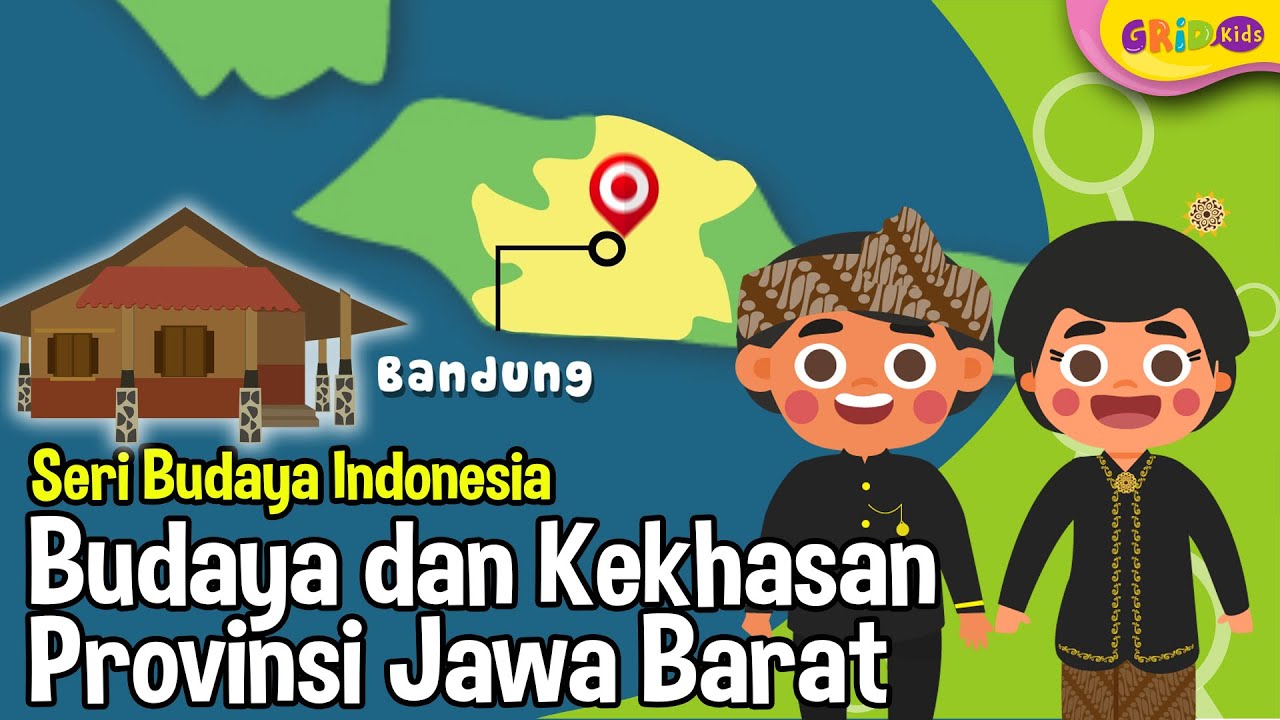JAIPONGAN!! Sejarah dan Asal-Usul tari JAIPONG
Summary
TLDRThis video introduces the traditional Sundanese dance, Jaipong, originating from Bandung, created by Gugum Gumbira. The dance is a modern evolution of the traditional Ketuk Tilu dance and is characterized by dynamic, sensual movements with lively music. Jaipong’s distinctive features include 'Geol', 'Gitec', and 'Goyang', referring to hip movements. It is often associated with femininity, with gestures symbolizing strength, flexibility, and charisma. The video also traces the dance’s origins and its cultural significance, offering insight into the creative process behind its development and how it became a prominent art form in Indonesian culture.
Takeaways
- 😀 *Tari Jaipong* is a traditional dance from West Java, Indonesia, created by Gugum Gumbira in 1976.
- 😀 The dance is a modern modification of the traditional *Ketuk Tilu* dance and is known for its lively movements and fast tempo.
- 😀 Gugum Gumbira was influenced by his exposure to traditional arts at home and conducted a survey of West Javanese arts to inspire his creation of *Tari Jaipong*.
- 😀 *Tari Jaipong* incorporates movements called 3G: *geol* (hip rotation), *gitik* (hip thrust), and *goyang* (hip swing), which are dynamic and sensual.
- 😀 The name *Jaipong* was inspired by a sound heard during a topeng banjet performance, which led to the creation of the dance's name.
- 😀 The dance reflects the characteristics of Javanese women, portraying them as agile, expressive, strong, and graceful.
- 😀 *Tari Jaipong* is often associated with femininity and includes movements like *singles* (agility), *galeong* (flirtatious eye glances and smiles), and graceful body fluidity.
- 😀 In 1965, President Soekarno’s decree against foreign arts led Gugum Gumbira to return to his roots in traditional Indonesian dance and arts.
- 😀 The dance was initially named *Ronggeng Ketuk Tilu* but was renamed *Tari Jaipong* due to legal restrictions on the original name.
- 😀 *Tari Jaipong* is celebrated for its ability to invite spectators to join in the movement, with lively and rhythmic music that encourages dancing.
Q & A
What is the origin of the Jaipong dance?
-Jaipong dance originated in Bandung, West Java, and was created by Gugum Gumbira in the 1970s as a modern development of the traditional Sundanese dance called Ketuk Tilu.
Who is Gugum Gumbira, and what role did he play in the development of Jaipong?
-Gugum Gumbira was a prominent artist and creator of Jaipong. He modified traditional Sundanese dances, blending them with modern elements to create a unique style that is now known as Jaipong.
What is the historical significance of Jaipong in relation to Indonesian culture?
-Jaipong is significant as a blend of traditional and modern dance, symbolizing the preservation of Sundanese cultural heritage while also evolving to appeal to contemporary audiences.
What are the key movements in Jaipong dance, and what do they symbolize?
-The key movements in Jaipong include 'geol' (hip movement), 'gitac' (hip thrust), and 'goyang' (hip swing). These movements are dynamic and sensual, symbolizing the lively and expressive nature of Sundanese women.
How did Jaipong's name come to be?
-Jaipong's name was inspired by the sound of the music, specifically the word 'jaipong,' which mimics the rhythmic sound of the drums used in the dance. This name was suggested after Gugum Gumbira saw a performance involving the word 'jaipong.'
What cultural influences shaped the creation of Jaipong?
-Jaipong was shaped by a combination of traditional Sundanese dances, such as Ketuk Tilu, and other regional arts like pencak silat and tembang, as well as a desire to create a distinctly local dance form during the cultural climate of the 1960s and 1970s in Indonesia.
What was the initial name of Jaipong before it became known by its current title?
-Before being named Jaipong, the dance was initially referred to as 'Tari Ronggeng Ketuk Tilu.' However, the name was changed to Jaipong after issues with the original name's association with existing traditional forms.
What role did President Soekarno's policy play in the development of Jaipong?
-President Soekarno's policy in the 1960s, which banned foreign cultural influences, pushed artists like Gugum Gumbira to focus on traditional Indonesian arts, contributing to the development of Jaipong as a response to the cultural restrictions.
How does Jaipong reflect the characteristics of Sundanese women?
-Jaipong reflects the characteristics of Sundanese women through its movements. For example, the 'galeong' movement, with eye contact and a playful smile, represents the femininity and charm of Sundanese women, while other movements emphasize strength, grace, and resilience.
What challenges did Gugum Gumbira face in promoting Jaipong?
-Gugum Gumbira faced challenges in promoting Jaipong due to the original name 'Ronggeng Ketuk Tilu' being associated with an existing traditional dance. He had to rename the dance, eventually settling on Jaipong, to ensure it was distinct and widely accepted.
Outlines

This section is available to paid users only. Please upgrade to access this part.
Upgrade NowMindmap

This section is available to paid users only. Please upgrade to access this part.
Upgrade NowKeywords

This section is available to paid users only. Please upgrade to access this part.
Upgrade NowHighlights

This section is available to paid users only. Please upgrade to access this part.
Upgrade NowTranscripts

This section is available to paid users only. Please upgrade to access this part.
Upgrade NowBrowse More Related Video

Jaipongan: Sejarah dan Gerak Dasar

Tari Jawa Barat/ part 2/Tari Indonesia/Tari Nusantara/Tari tradisional Indonesia

Mengenal Berbagai Jenis Tari Tradisional Jawa Barat yang Populer Hingga Sekarang

SUKU SUNDA - VIDEO EXPLAINER

Budaya dan Kekhasan Provinsi Jawa Barat - Seri Budaya Indonesia

Tari Saman Aceh | Cerita, Gerakan Tari, dan Makna Gerakan Tari
5.0 / 5 (0 votes)